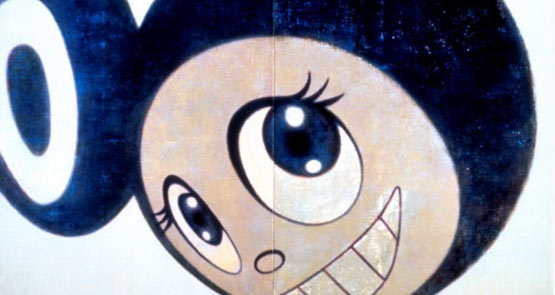I don’t often get to write a good news story in this column. But the release of the federal government’s Asian Century white paper offers one, because for once in an important Australian government policy document the arts and culture are a significant and integral part of the discussion.
The white paper devotes serious attention to the role of the arts and culture in the coming century. On page 252, for instance, it states:
“Importantly, our links with Asia are social and cultural as much as they are political and economic. The arts, culture and creativity play an important role in strengthening Australia’s relationships with people in Asia. Australia’s cultural strengths underpin values of respect, understanding and inclusion that help to connect people, business, institutions and governments across the region.”
That’s only just, because when it comes to engaging with Asia, Australian artists and cultural institutions in Australia are leading the way. In fact, a couple of the cultural programs mentioned in the report — AsiaLink and the Queensland Art Gallery’s Asia Pacific Triennial — have been way out ahead of much of the rest of Australian society, including business and government.
Two women are among the leaders in Australia’s engagement in Asian culture and art. Lesley Alway has been the arts director of AsiaLink since 2010. She’s a former director of Arts Victoria, the Heide Museum of Art and a former CEO of Sotherby’s Australia.
“Over the past 20 years, we’ve probably sent six or seven hundred people on Asian exchanges,” she told Crikey. AsiaLink has been running residencies for Australian artists and arts managers in Asia since 1991. Residents have visited virtually every country in the region
“Every country in south-east Asia, to China, India, Japan, you name it, we’ve got a resident in Mongolia at the moment, so you know the residents would have covered every square mile of Asia over the past 20 years.
“Many of the residents come away with ongoing projects. If you track many of the things that are happening in Asia from an Australian perspective now, if you track back far enough, more often than not, someone has done an AsiaLink residency. It really stimulates a whole network.”
Alway says the true value of residencies is the confidence they give to Australian artists to work in Asia. “Most artists and arts managers are trained in a western model with western mindsets. When you go to Asia, you’re actually dealing in a whole new paradigm,” she said.
She points out that western styles of arts management and goal-oriented projects are not necessarily the way things get done in Asia.
“When you go to Asia they say, ‘if you already know the outcome, why would you bother doing it?’ You need to go to Asia, build up relationships, trust, and depending on the conversation or the marriage of interests, projects will develop or they’ll evolve. Often they can’t be determined by a KPI. Australia wants to engage with Asia, but it can’t just go in there taking its linear model,” she said.
Alway mentions the current “book wallah” festival AsiaLink is helping to sponsor as a good example. The organisation is sending three Australian writers — Michelle de Kretser, Benjamin Law and Kirsty Murray — to travel across India to literary festivals — by train.
“If there’s one thing the arts can teach the rest of Australia about Asian engagement, Suhanya thinks it might be about staying the course: ‘One thing to say is that one can never stop learning, it’s not finite, it’s an ongoing process.'”
Can business and government learn from what the arts has managed to achieve engaging with Asia? “I think business has actually done a pretty good job,” Alway said. “They do understand that doing business in Asia is about building relationships. In Australia, we want to do a deal, and then we might go and have a drink. In Asia, you’ve got to build the trust, and often the social and cultural interactions are very much part of that.”
Alway believes the white paper could have featured the arts and culture even more prominently. “We’re really pleased that there were comments in the white paper, that it’s not just economics, and I’m really glad that the government has endorsed that. Obviously from the arts perspective, I would have liked to see the arts section right up front, and then the economics flow from that.”
Suhanya Raffel is the acting director of the Queensland Art Gallery. A veteran curator, she’s worked on every Asia Pacific Triennial since 1996, and was the lead curator of the last APT in 2009-10. She says it’s been “transformative” for the gallery, establishing it as the unquestionable leader of Asian art in Australia and one of the leading institutions regionally.
“It was a big commitment to go there every three years, to collect, to keep that ongoing rigour. It gives us such a wonderful structure,” she said.
The gallery has now assembled one of the best collections of contemporary Asian art in the world. “We began collecting from 1994 and we’ve never looked backed since. It’s always been ambitious collecting, we felt very confident in that,” Raffel told Crikey.
Suhanya is cautiously positive about the white paper, particularly welcoming its focus on Asian languages. “It’s very good that they’ve started talking about language, I think language is something we need to take seriously. And of course, education about the arts and about culture in Asia, about history, about geography, about politics — all of that needs to be part of that long-term vision as well,” she said.
If there’s one thing the arts can teach the rest of Australia about Asian engagement, Suhanya thinks it might be about staying the course: “One thing to say is that one can never stop learning, it’s not finite, it’s an ongoing process. One really important thing that the APT recognised right from the beginning was it was as much about us as the region, and how we operated in it — it’s that two-way dialogue.”
Suhanya points out Asia is a very big place: “That one small word encapsulates a huge amount of difference; you have to be attentive to the different kinds of voices, and that situations are quite unique to each location.” This year’s APT will feature a strong program of art from western Asia, co-curated with Istanbul-based artist November Paynter.
“We’ve been working with the region for a long time, and I’m talking even pre-colonially, if you look at how Aboriginal cultures were in dialogue with the Makassans, it’s a long history. That’s what I mean about that recognition about the two-way being fundamental about these projects. That’s where the richness lies.”
*AsiaLink residencies for 2014 will open in 2013. The seventh Asia Pacific Triennial opens in Brisbane in December.









Add this to Ben Eltham’s observation. The weekly radio program Arts Alive on the Community Radio Network, has carried more programming about the arts in Asia than has ABC Radio National. There is a lot more engagement with the arts and culture of Asia at the Asia Link level and lower than there is among most government agencies.
A little government recognition would go a long way.
Barry O’Farrell needs to seriously reconsider the true value of visual arts education before implementing his govt’s demolition of the creative arts courses in TAFE